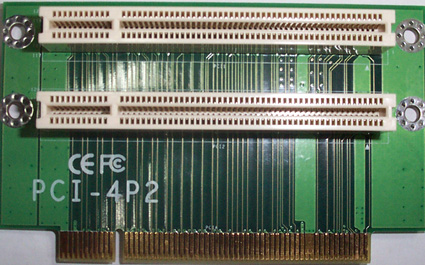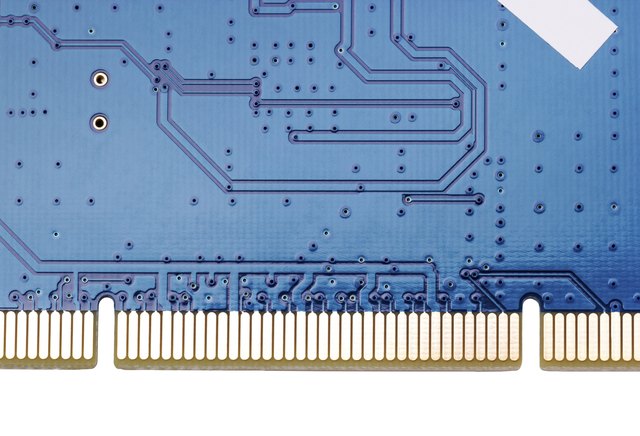Stands for 'Peripheral Component Interconnect.' PCI is a hardware bus used for adding internal components to a desktop computer. For example, a PCI card can be inserted into a PCI slot on a motherboard, providing additional I/O ports on the back of a computer.
The PCI architecture, also known as 'conventional PCI,' was designed by Intel and introduced in 1992. Many desktop PCs from the early 1990s to the mid 2000s had room for two to five PCI cards. Each card required an open slot on the motherboard and a removable panel on the back of the system unit. Adding PCI cards was an easy way to upgrade a computer, since you could add a better video card, faster wired or wireless networking, or add new ports, like USB 2.0.


Aug 17, 2020 A PCIe or PCI express slot is the point of connection between your PC’s “peripheral components” and the motherboard.
The original 32-bit, 33 MHz PCI standard supported data transfer rates of 133 megabytes per second. An upgraded 64-bit, 66 MHz standard was created a few years later and allowed for much faster data transfer rates up to 533 MHz. In 1998, IBM, HP, and Compaq introduced PCI-X (or 'PCI eXtended'), which was backwards compatible with PCI. The 133 MHz PCI-X interface supported data transfer rates up to 1064 MHz.
- Slots are often called expansion slots because they allow you to expand the capabilities of a computer. The boards you insert in expansion slots are called expansion boards or add-on boards. Do not confuse slots with bays. Bays are sites within the computer where you can install disk drives.
- The slots are proprietary, meaning an AGP card will not fit into a PCI slot, or visa versa. Knowing what slots a motherboard has when purchasing a new system is a good idea. Users who want the latest, fastest graphics card, for instance, will be looking at PCIe cards and will require a specific connection for it.
Both PCI and PCI-X were superseded by PCI Express, which was introduced in 2004.
Updated: June 25, 2018
Stands for 'Accelerated Graphics Port.' AGP is a type of expansion slot designed specifically for graphics cards. It was developed in 1996 as an alternative to the PCI standard. Since the AGP interface provides a dedicated bus for graphics data, AGP cards are able to render graphics faster than comparable PCI graphics cards.
Definition Software
Like PCI slots, AGP slots are built into a computer's motherboard. They have a similar form factor to PCI slots, but can only be used for graphics cards. Additionally, several AGP specifications exist, including AGP 1.0, 2.0, and 3.0, which each use a different voltage. Therefore, AGP cards must be compatible with the specification of the AGP slot they are installed in.
Since AGP cards require an expansion slot, they can only be used in desktop computers. While AGP was popular for about a decade, the technology has been superseded by PCI Express, which was introduced in 2004. For a few years, many desktop computers included both AGP and PCI Express slots, but eventually AGP slots were removed completely. Therefore, most desktop computers manufactured after 2006 do not include an AGP slot.
Definition Information Technology

/evga-geforce-6200-agp-graphics-card-amazon-56a6fade3df78cf772913fe9.png)
Updated: November 20, 2015